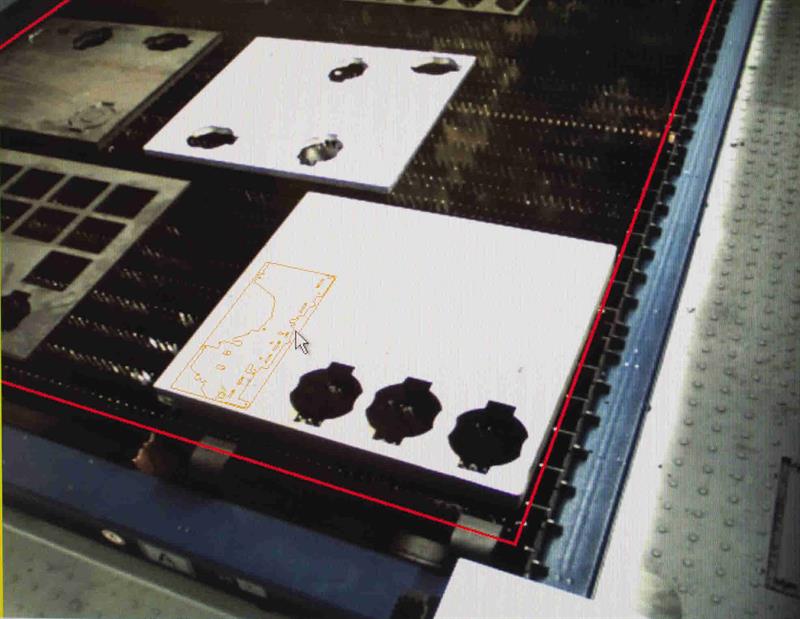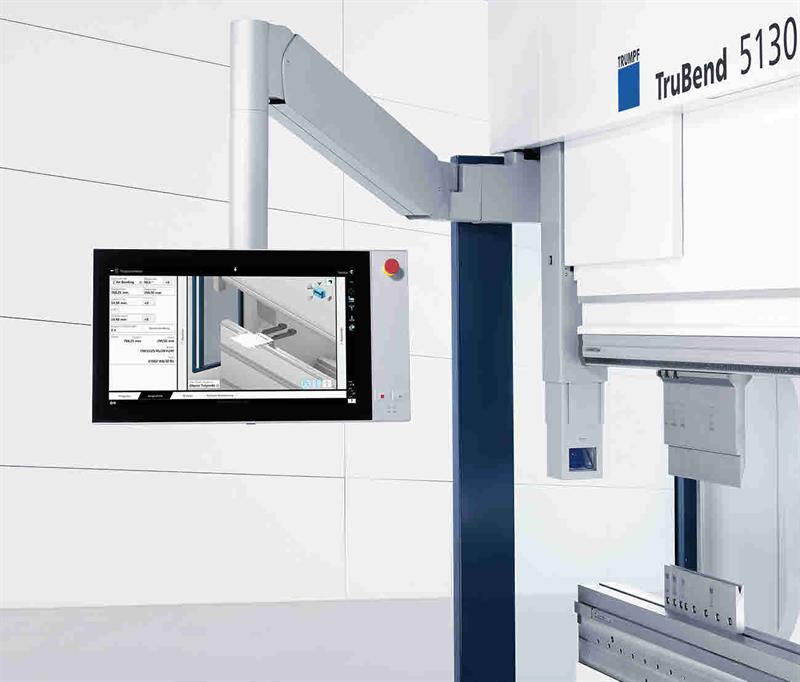Following a worldwide launch at BlechExpo in Stuttgart, Germany, late last year, the latest Trumpf 5030 5-series laser profiler can be fitted with an 8 kW TruDisk laser source (6 kW is standard, but only the 8 kW option comes with BrightLine technology for improved performance over varying sheet thicknesses). At a January press day, a machine specified with the higher power source spectacularly demonstrated its ability to pierce and cut 40 mm stainless steel plate, making palm-sized O-shape parts nearly as thick as they were wide, and in short order, too. Its capabilities also include cutting mild steel and aluminium up to 25 mm thick, and 10 mm copper and brass.
The first UK customer among 100 orders worldwide is AK Stainless of Preston, Lancashire, which was due to receive its machine – a 4 m by 2 m 5040 machine with 8 kW TruDisk source – this month. Its managing director, Tony Baron, says: “We are experiencing continued demand for thicker cut plate, particularly from heavy engineering sectors such as nuclear.”
AK Stainless’s machine comes with three of the five new options for fibre lasers. First Smart Beam Control that regulates the 600 micron-wide beam in real time. Second is a mist spray system, previously only available on CO2 machines, called CoolLine. This stabilises cutting by cooling the material, so that the gap between cut parts can be decreased.
DRAG-AND-DROP INTERFACE
The third new option taken by AK, and demonstrated on the Trumpf showroom floor to the press, is the ‘Drop & Cut’ operator interface for using up sheet remnants. A camera mounted inside the laser-tight machine guarding displays an image of the remnant on the user’s control touch-screen. On to that projected sheet image, operators can ‘drag and drop’ an existing part design, chosen from a portfolio of parts, into a space on the sheet. Although new, this software is retrofittable on recent (5-series) laser profiling machines, but, sadly, is not available on Trumpf’s punch machines.
 ‘Drop & Cut’ sees parts manually placed (outlined on sheet) on to remnant sheets
‘Drop & Cut’ sees parts manually placed (outlined on sheet) on to remnant sheets
The other two new fibre laser options include automatic laser marking for tracing purposes of a code on every part processed, and a collision protection system that protects the laser head from falling cut-out components.
Trumpf GB technical director Lee Moakes explains that fibre lasers are gaining an edge over CO2-based gas discharge lasers. He reports that last year’s orders were 60% weighted away from CO2 and toward Trumpf’s solid-state, fibre-delivered lasers, which consume less energy and process gas. Orders current at the time of the press event were biased 80% toward solid-state. Still, he maintains that Trumpf has no plans to phase out CO2 sources. Both technologies will continue to coexist: “There will always be a future for CO2 profiling.” In some applications, CO2-based profiling can offer a better surface finish, he says.
Similarly, punching is not in danger of disappearing, Moakes adds. Although less flexible in cutting than are laser profilers that can make any shape without requiring tooling, they continue to develop, too. In fact, they have become mini-fabrication centres, offering forming, tapping, bending, as well as punching. Trumpf demonstrated a TruPunch 3000 mid-range punch with SheetMaster automation system in January. It picks up a sheet off the stack and unloads parts onto a platform, though more sophisticated output options – into cartons or pallets, for example – are available also.
Such automation systems are becoming ever more common across all types of Trumpf machines. Moakes points out that half of laser orders in the company’s last fiscal year (July 2014 to June 2015) had some kind of automation system; these orders were not just from OEMs but from job shops, too. And this trend has continued since then, he adds. Systems ordered may vary from complex sheet storage systems to simpler loading and unloading devices, such as Liftmaster Compact.
On that score, the company’s new mid-range laser profiler, TruLaser 2030 Fiber (standard laser power 3 kW; optional 4 kW), integrates with a new, modular automation system called LiftMaster Shuttle in various configurations of automated loaders and unloaders. An automatic nozzle changer is also available.
New Trumpf GB managing director Annette Doyle, previously the manager of a US Trumpf laser profiler assembly factory, says that the UK market is less sophisticated about automation than those on the continent, in particular, Germany, the Netherlands and Belgium. But she says that sooner or later automation is inevitable: “Eventually, it’s not going to be the company or country that has the cheapest labour that’s going to be successful, but the company or country with the most intelligent robots and the most skilled labour to operate and program those robots. We want to be part of that.” Amplifying that message, under the umbrella brand TruTops Boost the company showed a range of web-based services to help companies manage orders and production. And launching in April is a web-based remote diagnostics and reporting tool, called Performance Cockpit.
Improved ease of use also features in a new pressbrake, the TruBend 5000: particularly in its operator control, TouchPoint TruBend, that includes 3D part visualisation. The pressbrake, which also includes a shoe-mounted trigger and two independent angle measurement systems, is said to be 20% more productive than the previous model, thanks to these features plus new servo-hydraulic cylinders. Although not shown at the January event, the pressbrake had already been launched into the market, Trumpf advised, and has already won a UK order.
 The TruBend pressbrake features a TouchPoint TruBend operator control
The TruBend pressbrake features a TouchPoint TruBend operator control
ADDITIONAL EXCITEMENT
Two other exciting machines that were not there either were the company’s first metal 3D printing machines: the TruPrint 1000 LMF and Trulaser Cell 3000. Unusually, the company is offering two different metal additive manufacturing (AM) technologies. Emplying a 200 W fibre laser, its TruPrint 1000 LMF uses laser fusion of metal powder to produce parts within a build area of 100 mm diameter and 100 mm high that has a protective atmosphere. This particular machine is made in Italy through a 55% Trumpf-owned joint venture with AM specialist Sisma.
The laser metal deposition process, in which a head blows metal powder beneath a laser where it is melted and fused, is available on the company’s existing multi-axis cutting and welding Trulaser Cell machines, such as the TruLaser Cell 7040 or 3000.
Powered by a TruDisk laser, the process can deposit up to 500 cm3/hr in a larger build envelope – it was described as a mid-range machine. This system does require separate laser and powder delivery equipment, however.
Both machines received their worldwide launch at Germany’s Formnext show late last year. Trumpf was surprised by the number of enquiries it had at the event, says national sales manager Gerry Jones. Since then, the pilot machines have been delivered, and the first production units were, at the January event, said to be on their way to customers. Their UK launch is planned for late spring this year.
This feature was first published in the March 2016 issue of Machinery magazine.




